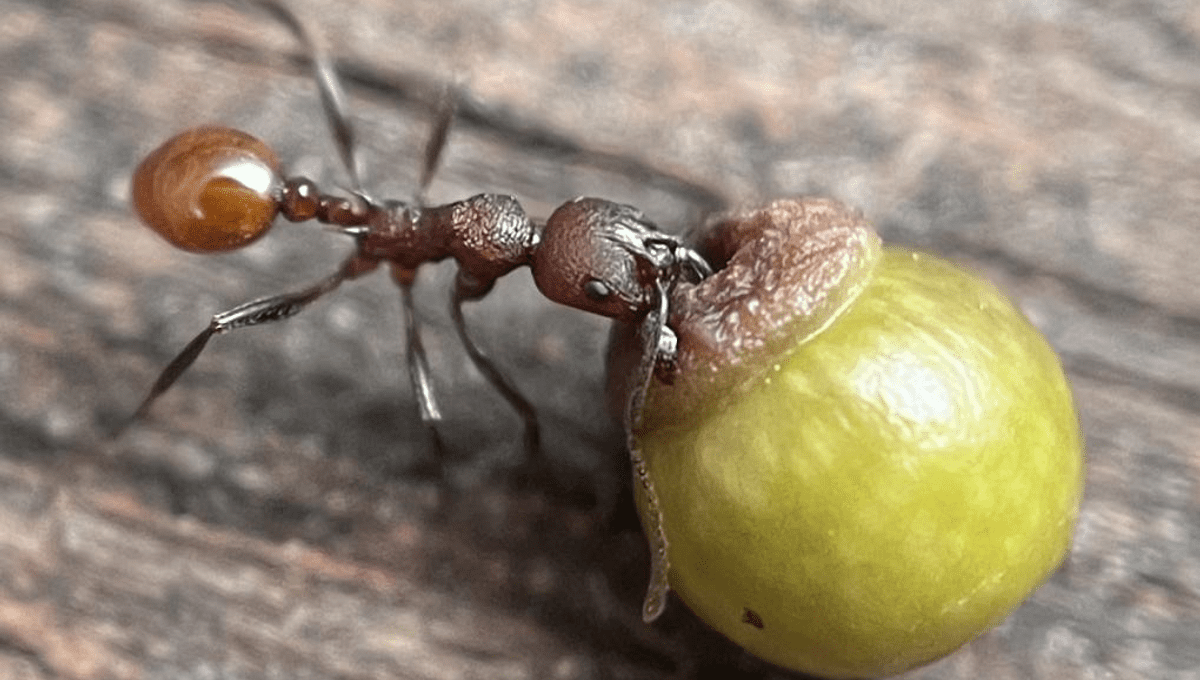
Hugo Deans was just 8 years old when he noticed what he thought were seeds around an ants’ nest. Other children might have made such an observation and had nothing come of it, but Hugo’s father Andrew is a professor of entomology at Penn State University and realized Hugo had spotted something important. Further investigation revealed that ant-wasp collaborations aren’t confined to Marvel films.
Deans senior immediately realized Hugo’s “seeds” were actually wasp galls and wondered what the galls were doing around the ants’ nest. Further investigation has led to a paper in American Naturalist revealing wasps are using oak trees as intermediaries to gain ant protection for their young.
More than a thousand species of wasps lay their eggs on leaves and manipulate the plant, probably by injecting something into the leaf, to create a gall that protects eggs and larvae from predators and the environment. Oak leaves are a favorite target.
Deans was also aware many plants practice “myrmecochory”, using ants to disperse their seeds. To give their offspring space, while preventing consumption, these plants produce seed appendages, known as elaiosomes. Unlike the seeds themselves, the elaiosomes are tasty to ants, and get consumed in the nest.
“In myrmecochory, ants get a little bit of nutrition when they eat the elaiosomes, and the plants get their seeds dispersed to an enemy-free space,” Deans explained in a statement. “The phenomenon was first documented over 100 years ago and is commonly taught to biology students as an example of a plant-insect interaction.”
After observing the galls near the nests were missing caps usually found on this species, Deans guessed the ants were eating the caps. Deans and co-authors investigated. “Ultimately this led us to discover that gall wasps are manipulating the oaks to produce galls, and then taking another step and manipulating ants to retrieve the galls to their nests,” Deans said.
Whether the benefit of wintering in an ants’ nest is an extra level of protection from predators, or is to avoid getting waterlogged remains unknown. Either way, “This multi-layered interaction is mind-blowing,” Deans said. “It’s almost hard to wrap your mind around it.” Nevertheless, the team confirmed it, finding galls safely stashed in the ants’ nests after the caps have been eaten and filming ant behavior around the galls.
Experiments demonstrated the ants are equally attracted to the caps as to elaiosomes, treating galls and seeds the same way but spurning uncapped galls. Chemical analysis of the caps reveals they are full of fatty acids similar to the dead insects that form the bulk of the ants’ diet.
Being biologists, the authors are keen to discover how the practice evolved. Have ants been bringing seeds back to their nests for a long time, and the wasps cottoned on they could get in on the act by forcing the oaks to produce tasty caps on top of the galls? Or might Hugo have stumbled on the original, with myrmecochory be an imitation developed to take advantage of an existing ant behavior engendered by the wasps.
The first seems more intuitive, given myrmecochory is simpler and has been known for a century, but the authors are not so sure. Myrmecochory is restricted to a small number of plants and may be quite a new development by evolutionary time. The authors have received a grant to study the question further.
Other children who have played a part in scientific research at similar ages often express a desire to be scientists when they grow up, but Hugo instead told Penn State’s media department; “I want to be different…unique…when I grow up” rather than following in his father’s footsteps.
Source Link: Eight-Year-Old’s Observation Leads To Major Discovery About Ant-Wasp Collaboration